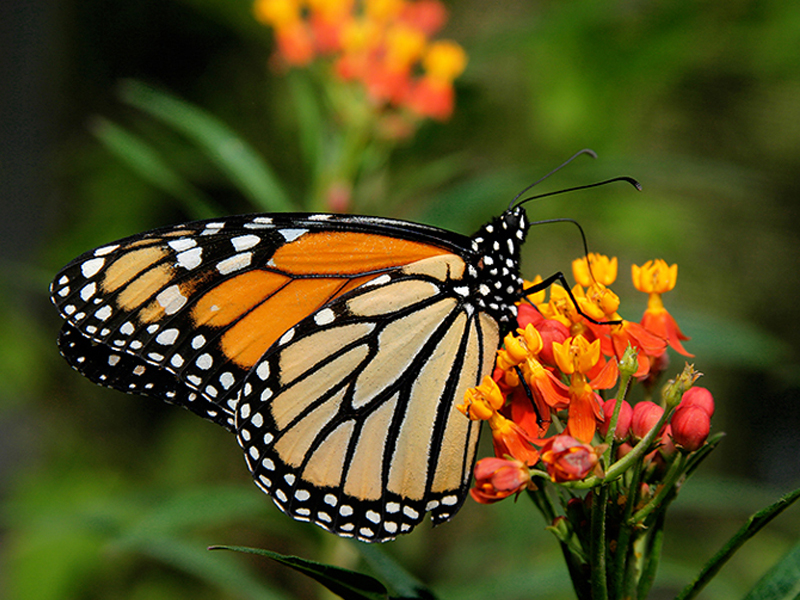Over the last 20 years, the number of monarch butterflies has drastically decreased. One of the main factors contributing to this is the loss of native milkweed populations.
“Milkweed is lost due to agriculture, development and the increased use of herbicides. Milkweed can be considered by many to be a weed, so it is pulled out of backyards and fields,” says Dr. Kim Pegram, program director, pollinator conservation and research.
Desert Botanical Garden has taken part in monarch conservation since 2004 by partnering with monarch conservation organizations, providing educational opportunities, starting a research program and registering as a Monarch Waystation. All of these elements are important, but the number-one way to preserve the monarch population is to grow milkweed and nectar plants. It is difficult to find native milkweed at local nurseries in Arizona, so the Garden initiated Great Milkweed Grow Out. The goal was to grow milkweed on a large scale, collect more than a million seeds and encourage the public to plant milkweed in their own gardens to help increase the monarch population. 
With the help of staff and volunteers and funding from Bureau of Land Management, U.S. Fish and Wildlife Service, Gila River Indian Community, and Monarch Joint Venture, Great Milkweed Grow Out has:
- Planted more than 20 pollinator gardens at schools and community centers.
- Grown and distributed more than 6,000 milkweed and native nectar plants to the community.
- Propagated 12 of the 30 milkweed species native to Arizona.
- Planted more than 6,000 native milkweed and nectar plant seeds as part of our propagation program this spring.
- Published research that shows monarchs are more likely to survive on Arizona milkweed (Asclepias angustifolia) than pineneedle milkweed (Asclepias linaria) in our region.
“Desert Botanical Garden’s focus is to bring milkweed back into the urban areas with backyard gardens. We have a goal to create what we call ‘habitat stepping stones’ across the wide expanse that is greater Phoenix by encouraging our members, visitors, and the general public to plant milkweed and other necessary plants,” explains Dr. Pegram.
In March 2017, the Garden opened a new butterfly exhibit. In addition to beautiful butterflies, the exhibit features a caterpillar nursery and a chrysalis emergence chamber. The exhibit gives visitors the opportunity to learn about the butterfly life cycle, pollination and why aiding in the preservation of butterflies is important.
“The Garden continues to expand our monarch conservation efforts because monarchs are important pollinators, the decline in monarchs may be an indication of broader declines in other butterflies and pollinators, and because monarchs are one insect that any backyard gardener can help,” says Dr. Pegram.
